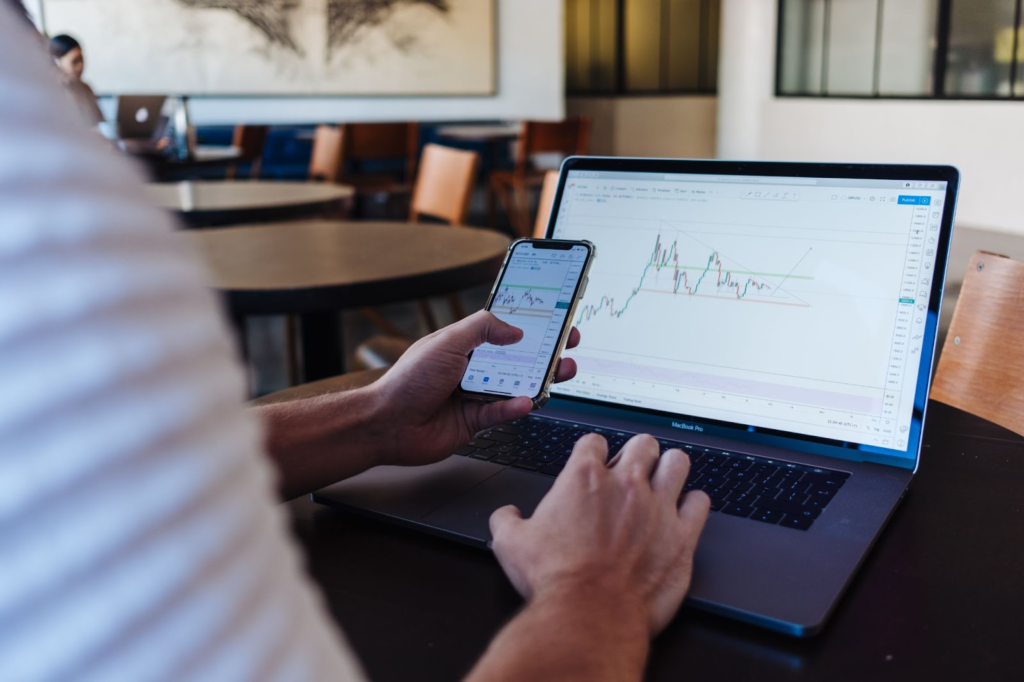As 2023 advances, forex trade is expected to undergo significant transformations. Experienced traders have numerous opportunities for trading forex due to technological developments and ongoing innovations in tools and tactics. This article seeks to uncover some of the more commonly employed strategies by industry professionals to maximize profits in this potentially risky market.
Engaging the Forex market
Foreign exchange trading, or forex trading, involves purchasing one currency while simultaneously selling another. It forms the cornerstone of global commerce and investment. You may become adept in recognizing market trends and capitalizing on profitable opportunities with practice and experience. At first, it may appear daunting, but this can be accomplished. Let’s explore some of the most prevalent forex trading methods professionals use today to give you an example.

(https://unsplash.com/photos/Gw_sFen8VhU)
Technical analysis and reading the market
Technical analysis is one of the cornerstones of forex trading. This involves looking at historical market data – most often price and volume data – to predict how it might behave going forward. The strategy relies on analyzing past patterns of price movement to predict future ones. Here is a list of important technical analysis methods utilized by forex trading gurus.
Moving averages
Moving averages have long been used to identify patterns in the foreign exchange market. It helps traders pinpoint support and resistance levels that may signal favourable entry and exit positions by plotting the average price of a currency pair over an extended period. The simple moving average (SMA) and exponential moving average (EMA) are popular when considering data from more recently traded prices.
Bollinger Bands
Bollinger Bands, created by John Bollinger, are three lines drawn around a currency pair’s moving average. Typically, outside lines – commonly referred to as bands – should be spaced two standard deviations away from this centre band, which represents its moving average. Bands close together indicate stable markets, while widely dispersed bands indicate growing volatility. Forex professionals often utilize Bollinger Bands to detect price reversals or breakouts quickly and accurately.
Support and resistance levels
Technical analysis extensively uses support and resistance levels as a map for understanding the forex market. Support levels represent price levels at which buyers might join the market to prevent further falls. On the other hand, resistance points indicate sellers who might step in to block future price rises; these price points can be represented by “resistance.” Identifying support or resistance levels helps traders make more educated judgments regarding entry or exit opportunities in the market.

(https://unsplash.com/photos/kkACMU0GYko)
Fibonacci retracements
The Fibonacci Retracement Tool is an established technique used to pinpoint likely levels of support and resistance in any market, drawing from the Fibonacci sequence. By applying it to currency pairs’ high and low points, traders may obtain ratios such as 23.6%, 38.2%, 50%, 61.8%, and 78.6%, representing potential market turning points. Particularly noteworthy ratios include 38.2% and 61.8% (which industry professionals see as noteworthy).
Fundamental analysis
Fundamental analysis examines the economic, social, and political elements affecting currency values, unlike technical analysis, which simply examines price action. Forex professionals typically combine both techniques into their analyses to gain a comprehensive view of their markets. Here are some essential fundamental analysis characteristics in forex trading.
Interest rates
Central bank decisions concerning interest rates tremendously influence currency prices. Higher rates often attract foreign capital investment, leading to an appreciation of local currencies. Forex professionals pay close attention to how central banks respond to predict possible changes and take advantage of any consequent currency swings.
Economic indicators
Indicators of economic performance are statistical data sets that offer insight into a nation’s economic performance. Metrics like gross domestic product (GDP), inflation, employment data, trade balances, and foreign currency value fluctuations attract particular scrutiny from analysts and investors. Forex specialists can use these indicators to gauge economic health and make smart trading choices based on projected currency value fluctuations by studying these indications and performing due diligence research.
Political events and geopolitical tensions
Currency values may be dramatically affected when there is an increase in global tensions or political events, creating uncertainty due to elections, policy shifts, or international conflicts. These all can influence market sentiment and cause fluctuations in currency values. Currency trading specialists closely monitor the global political climate to tailor their trading techniques appropriately.

(https://unsplash.com/photos/IT6aov1ScW0)
Market sentiment
“Market sentiment” refers to a qualitative measurement of market participants’ attitudes about a specific currency pair, used by traders and investors to assess market trends and predict whether current tendencies will reverse or continue. Forex professionals often combine market sentiment analysis with technical analysis and fundamental research to enhance decision-making and maximize profits.
Currency correlation
Currency correlation refers to the study of how two or more currency pairings move relative to one another. A positive correlation indicates they are moving in tandem, while negative correlations suggest opposing directions. Currency correlations provide traders with an effective tool for mitigating risk exposure and diversifying investment portfolios; understanding interdependencies among currency pairings may improve risk management and decrease exposure overall.
Carry trading
Carry trading is an established foreign exchange trading method that involves borrowing funds at low interest rates and investing them at higher ones, hoping to make a profit due to disparities in interest rates between currencies. Forex professionals frequently employ this strategy during times of low market volatility because its use reduces risks related to unexpected currency swings. However, to ensure successful implementation, it requires close monitoring of both market circumstances and differences between interest rates to achieve success.
Scalping
“Scalping” is a short-term trading technique designed to achieve incremental gains over one trading day by initiating and closing deals within minutes or seconds of one another. Scalping takes advantage of time constraints by quickly selling off large positions in exchange for smaller profits. Used mainly by forex specialists, scalping requires extreme discipline in risk management practices as its rapid nature could potentially cause huge losses if not controlled properly.
Conclusion
Foreign exchange trading occurs within a vast and constantly shifting market, offering experienced traders plenty of opportunities to sharpen their techniques and boost returns. Proficient traders may continue their success by applying technical and fundamental analysis, taking an in-depth understanding of currency correlations, and exploring different trading tactics such as carry trades or scalping. The key to foreign exchange success lies in continuous learning, robust risk management practices, and being responsive to an ever-evolving landscape.







Leave a Comment
You must be logged in to post a comment.